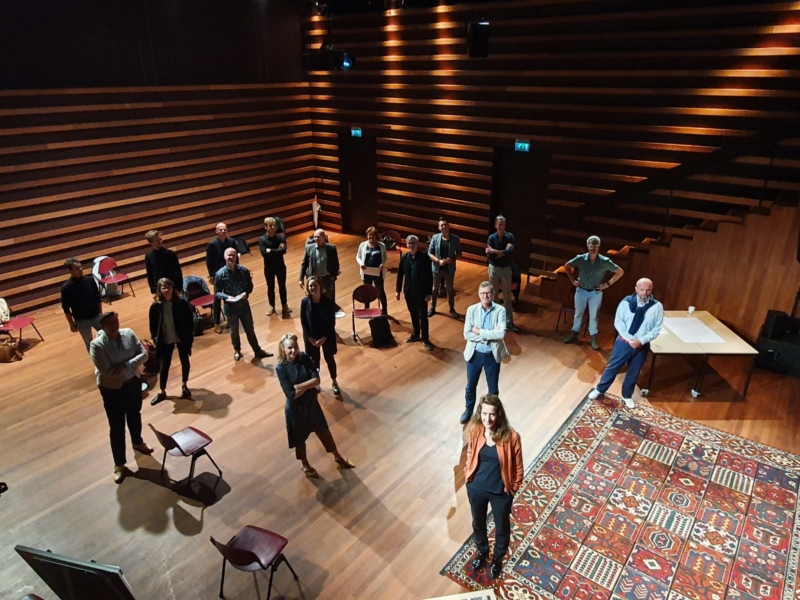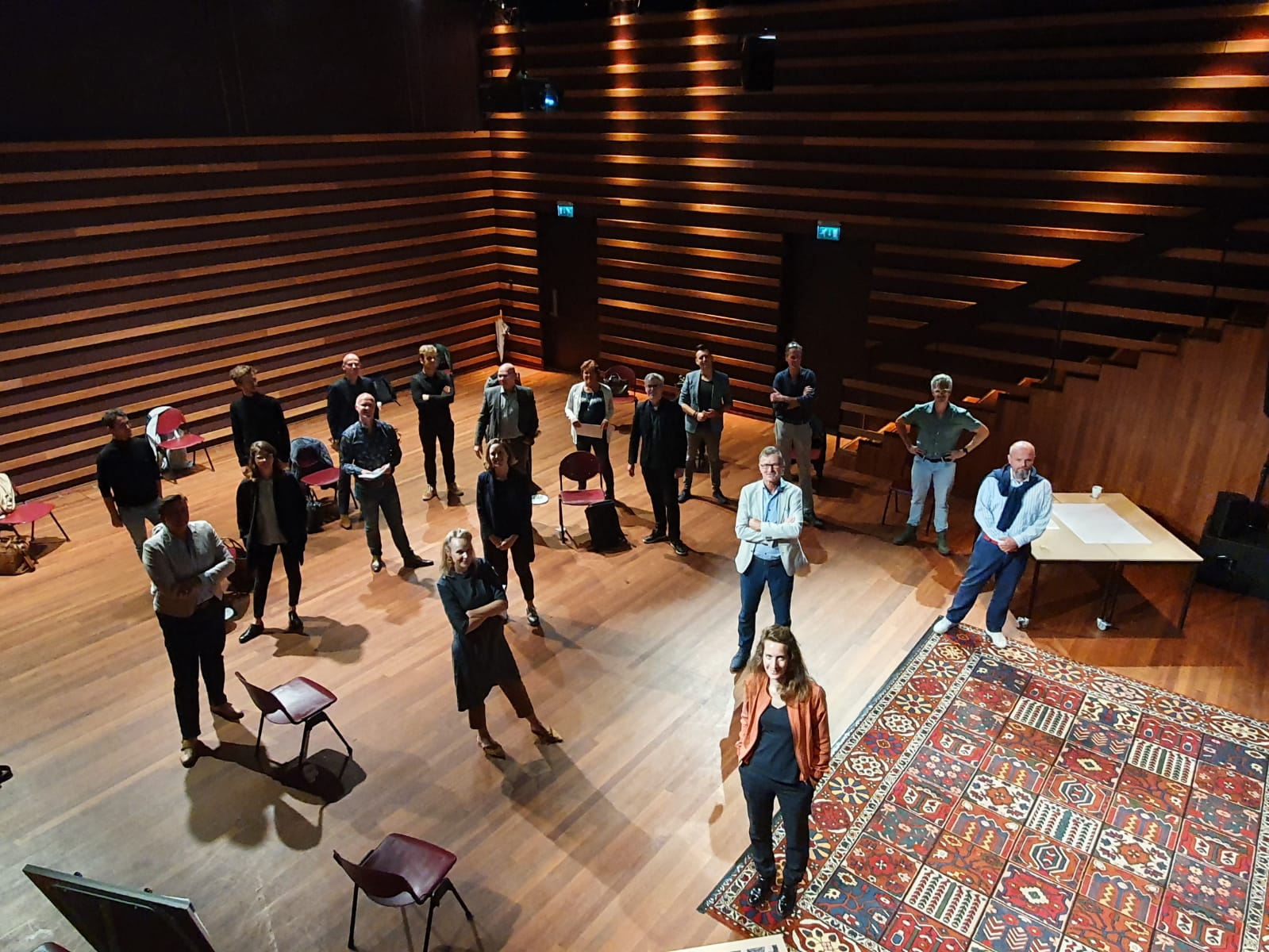Werkplaats Europan: Work in Progress

Kick off meeting Werkplaats E15 Groot IJsselmonde, with E15 winners and partners, and project team City of Rotterdam
Photo: AIR
The 15th edition of the Europan competition involves a broad consortium of partners. They let it be known that they wanted to work towards one or more realized projects beforehand. To achieve this goal, they felt it was logical to stay involved after the award ceremony as well. Together the partners, winners, runners-up and AIR established Werkplaats Europan, which aims to carry the projects a step further. What has that follow-up stage rendered so far?
Following up on local dynamics
Since each site has its own dynamics, Werkplaats Europan abandoned the idea of a fixed format. Each site requires its own method.
Christiaan Cooiman: ‘Groot IJsselmonde, for example, is typically the kind of site at which you have to make the challenge bigger than it was in the competition.’
Michelle Corbeau adds: ‘You can make local interventions here, but if you really want to achieve something you have to look at the bigger picture. The area requires large-scale investments, for example in the creation of park-like green lungs on either side of the project site and reflection on ways to create communities to improve the district’s social cohesion.’
Cooiman: ‘To jointly explore what that bigger challenge is, we decided to invite all stakeholders, including city officials, housing association employees and urban designers, to participate in various on-site workshops.’
Paul Becht: ‘To take steps in the right direction, the momentum is important as well. For example, we were already aware that it’s important to make parks in districts such as Groot IJsselmonde accessible, or safer. But the shared enthusiasm generated by Europan has given this challenge new relevance. As a result, the city reformulated its existing vision on the basis of the insights gained from the winning challenge.’
Attention to the social context
In the case of a site like Groot IJsselmonde, there’s still room to discuss the challenge together, but in other parts of the city such discussions are already at an advanced stage. With regard to the Visserijplein the process was underway even before the Europan competition. Werkplaats Europan is following up on this. Edward van Dongen, who is closely involved in the follow-up steps at this site, explains that the architect of the winning project, Guillem Colomer, knows the dynamics of the area well. ‘That much was clear from his team’s design proposal. They paid a lot of attention to the economy at the district level. Attention that, moreover, went hand in hand with a good dose of optimism.’ This clearly moved Van Dongen. ‘What strikes me is that this younger generation is not focused on the creation of context-free icons, but that they consider the social context of the projects very carefully.’
Corbeau, too, stresses the importance of this: ‘If you’re working on a site like Visserijplein, you have to know how people experience the place. This is actually true of all Europan sites. They are part of the existing city; you’re jumping onto a moving vehicle, as it were. That’s why participation is important. Discussions with residents provide insights that you cannot possibly have yourself, because you’re not a resident.’

Kick off meeting Werkplaats E15 Groot IJsselmonde, with E15 winners and partners, and project team City of Rotterdam
Photo: AIR
Archipuncture
In the Vierhavens District, which also has a very active community of involved residents and businesses, the dynamics are so great that they sometimes prevent the challenges from being tackled.
Stefan van Gurp: ‘Although the stakeholders share the same ambition, they subsequently find it difficult to be concrete. And then it turns out that everyone in the area has their own interests.’
Cooiman: ‘The existing city benefits from a method you might call “archipuncture”: interventions made at specific sites. This is tricky in the Vierhavens District, because in an area with such strong dynamics it’s difficult to decide where to place the “needles”.’
Claims and impasses
Werkplaats Europan’s approach to Kop Dakpark is complex for yet another reason.
Becht: ‘There are existing claims by third parties in the area and an allocation procedure has been initiated.’ He regrets that the city did not invite the Europan designers to reflect on a claim-free site, because this would have increased the chances of realization.
Van Gurp qualifies: ‘All sites have their own complexities. The fresh eyes of the Europan competitors can also carry ongoing projects a step further, for example when they find themselves in an impasse.’ And whereas Cooiman feels that the Werkplaats has played its part in Brainpark, because all of the plots are now owned by private owners, Van Gurp sees opportunities. ‘In an area like this, investors will wait to see which way the wind is blowing. They may be able to follow up on proposals made by Europan, if the winners, together with the city, develop them into a number of guiding principles for the area.’
Incubation period
Werkplaats Europan is a work in progress. How to proceed?
Corbeau: ‘Processes of this kind always involve an incubation period. This means that last year, we did a lot of talking.’
Cooiman: ‘But the commitment to continue to work together is still great. The book of realized Europan projects definitely needs to have more pages. Together we feel compelled to continue to help the firms that make us look at the city through their eyes to develop their ideas.’
Paul Becht is a regional manager of the BPD Gebiedsontwikkeling Regio Zuid-West, Christaan Cooiman is a commercial regional manager at Heijmans Vastgoed, Michelle Corbeau is a senior development manager at AM Regio Zuidwest, Edward van Dongen is the head of initiative & concept / concept developer at ERA Contour B.V. and Stefan van Gurp is a senior project developer at Dudok Groep.



